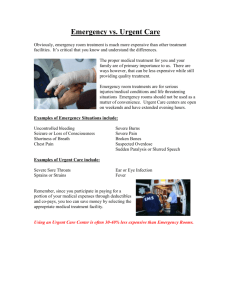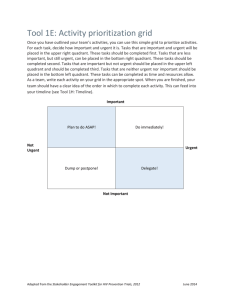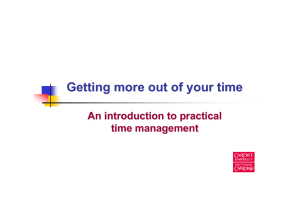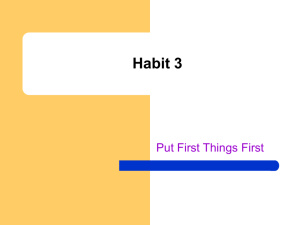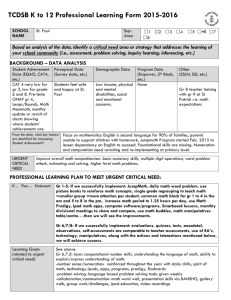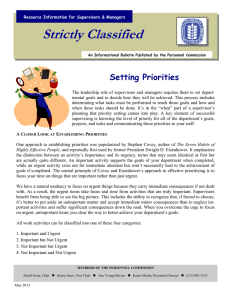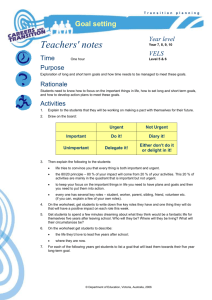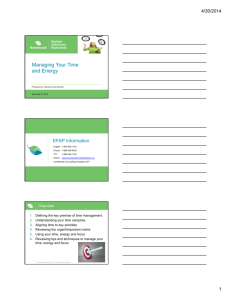Fact Sheet 2 - Risk versus Issues
advertisement
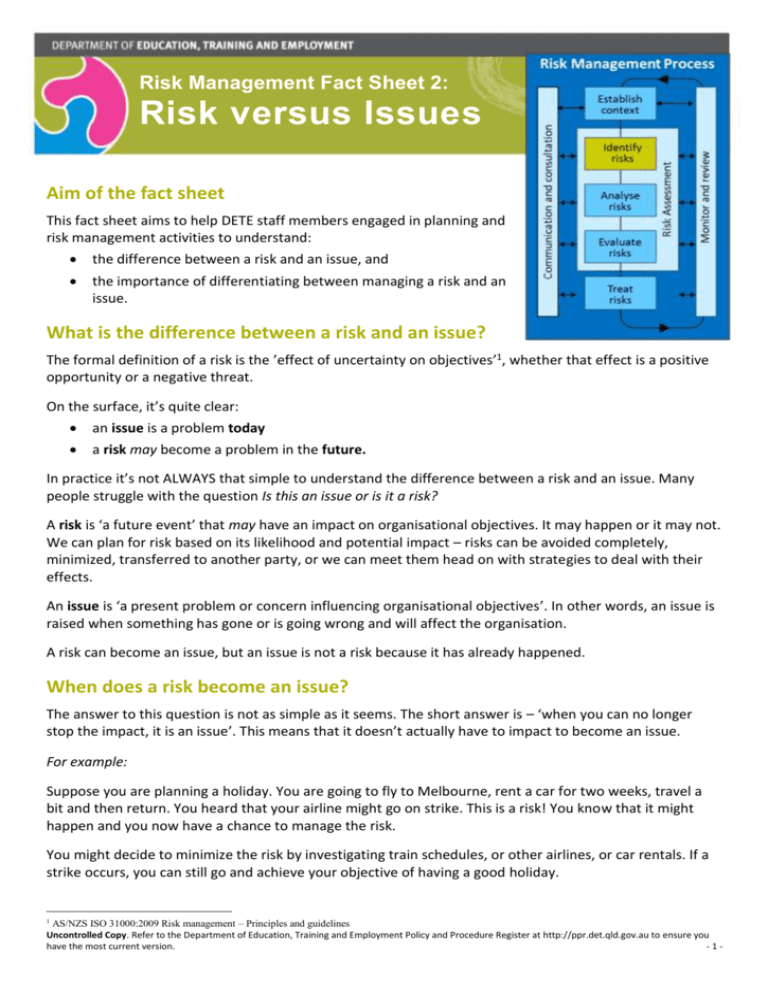
Risk Management Fact Sheet 2: Risk versus Issues Aim of the fact sheet This fact sheet aims to help DETE staff members engaged in planning and risk management activities to understand: the difference between a risk and an issue, and the importance of differentiating between managing a risk and an issue. What is the difference between a risk and an issue? The formal definition of a risk is the ’effect of uncertainty on objectives’1, whether that effect is a positive opportunity or a negative threat. On the surface, it’s quite clear: an issue is a problem today a risk may become a problem in the future. In practice it’s not ALWAYS that simple to understand the difference between a risk and an issue. Many people struggle with the question Is this an issue or is it a risk? A risk is ‘a future event’ that may have an impact on organisational objectives. It may happen or it may not. We can plan for risk based on its likelihood and potential impact – risks can be avoided completely, minimized, transferred to another party, or we can meet them head on with strategies to deal with their effects. An issue is ‘a present problem or concern influencing organisational objectives’. In other words, an issue is raised when something has gone or is going wrong and will affect the organisation. A risk can become an issue, but an issue is not a risk because it has already happened. When does a risk become an issue? The answer to this question is not as simple as it seems. The short answer is – ‘when you can no longer stop the impact, it is an issue’. This means that it doesn’t actually have to impact to become an issue. For example: Suppose you are planning a holiday. You are going to fly to Melbourne, rent a car for two weeks, travel a bit and then return. You heard that your airline might go on strike. This is a risk! You know that it might happen and you now have a chance to manage the risk. You might decide to minimize the risk by investigating train schedules, or other airlines, or car rentals. If a strike occurs, you can still go and achieve your objective of having a good holiday. AS/NZS ISO 31000:2009 Risk management – Principles and guidelines Uncontrolled Copy. Refer to the Department of Education, Training and Employment Policy and Procedure Register at http://ppr.det.qld.gov.au to ensure you have the most current version. -11 Now suppose you fly to Melbourne as planned and the airline goes on strike before you can return. You now have an issue that you must resolve. The potential impact on your objectives of the original risk didn’t eventuate: you were able to fly to Melbourne and have a good holiday. However, you now have the issue of getting home. Why do we differentiate between management of risks and issues? Activities can be categorised according to quadrants in a time management matrix (figure 1). We have to deal with the Important and Urgent things first. After that we tend to start working on the Urgent but Not Important stuff, but when dealing with the urgent but not important, we allow ourselves to get distracted (interruptions, phone calls, emails etc.). The effect of this is we don’t spend enough time on the Important and Not Urgent tasks. But if we focused more on the Important and Not Urgent, tasks then we have to spend less time on fixing the Important and Urgent. Important Figure 1: Time Management Matrix Urgent Not Urgent I : Quadrant of Necessity Manage II : Quadrant of Quality & Personal Leadership Focus Activities Crisis (Issues management) Pressing problems Deadline-driven projects Last minute preparations Activities Planning, preventing, preparing (risk management) Capability improvement Relationship building Recognising new opportunities Planning, recreation Not Important III : Quadrant of Deception Avoid IV : Quadrant of Waste Avoid Activities Activities Interruptions, some callers Trivia, busy work Some mail, some reports Some mail Some meetings Some phone calls Proximate, pressing matters Time wasters Popular activities Escape activities Based on 7 Habits of Highly Effective People, Stephen Covey Applying this to risk management; the Important and Urgent things are ‘issues’. ‘Risks’ are clearly Important (if not addressed they are likely to become Important and Urgent issues) but are Not Urgent as they haven’t yet occurred. With this in mind, focussing on risk management allows us to plan ahead to help achieve goals to potentially spend less time on issue management. It is also important to remove issues from the risk registers. Since issues are managed by applying resources to the consequences, inclusion of issues in the risk registers tends to mask true risks, and serves to track rather than resolve or modify risks. Uncontrolled Copy. Refer to the Department of Education, Training and Employment Policy and Procedure Register at http://ppr.det.qld.gov.au to ensure you have the most current version. -2-
